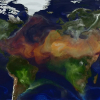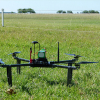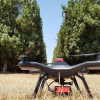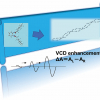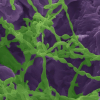Spectroscopy News
International team of scientists has proposed plans for a high-intensity gamma radiation source at CERN.
A research programme is investigating the prognostic value of skin findings associated with COVID-19 infection using a portable hyperspectral imaging system.
A NASA grant will help us to better understand how plant pathogens that travel the globe with dust particles might put crops at risk using imaging spectroscopy.
New atomic spectroscopy analyses reveal the origin of Stonehenge’s giant sarsen stones as West Woods on the edge of Wiltshire’s Marlborough Downs, about 15 miles to the north.
Multispectral and thermal infrared cameras are being used on planes and drones to find mains water leaks.
Models based on spectral images from unmanned aerial vehicles and satellites can help farmers to monitor the health of individual macadamia trees.
Researchers have integrated a photo-patterned liquid crystal into a dielectric metasurface to achieve achromatic and chromatic focusing with a single metalens.
Pfeiffer Vacuum is celebrating its 130 years in business. The company introduced the turbomolecular pump in 1958.
Merck has acquired Resolution Spectra Systems, a company producing Raman spectroscopy instrumentation for bioprocess analytical monitoring.
Researchers at the Beckman Institute for Advanced Science and Technology have developed a new method to improve the detection ability of nanoscale chemical imaging using atomic force microscopy.
The templating mechanism of S100A9 amyloids on Aβ fibrillar surfaces during co-aggregation process was revealed by synergy of biophysical methods including charge detection mass spectrometry, microscopy, kinetic and microfluidic analyses.
A partnership to enable the generation of classification models using the Headwall MV.X and perClass Mira software on a PC.
Infrared microscopy can automatically detect the type of intestinal tumour within 30 minutes. These results are then used to make targeted therapy decisions.
Analytik Jena plans to celebrate the anniversary with their customers, partners and employees in a special way. Thirty selected stories from customers, partners and employees will be published throughout the year.
The presence of kaolinite haloes surrounding ancient fossils is believed to have kept destructive bacteria at bay, stopping decay. The small molecular differences of the clay were analysed with the synchrotron infrared microbeam at Diamond Light Source.
A new type of imaging system for use in agriculture, designed to be far less expensive than existing technology, is being developed in a partnership between Scottish academics and industry.
Vibrational circular dichroism spectroscopy has been applied the VCD method to supramolecular systems.
CERN’s nuclear-physics facility, ISOLDE, has succeeded in performing the first ever laser-spectroscopy measurements of a short-lived radioactive molecule, radium monofluoride.
Alison Ashcroft and Ron Heeren have been awarded 2020 Thomson Medals.
Electron microscopy and Raman spectroscopy have shown the mechanism by which microorganisms are able to extract water from the rocks they colonise.



